“Blue Carbon Catchers” Find Nature-based Solutions from the Ocean to Offset Carbon Emissions
It also acts as a powerful natural carbon sink that absorbs and sequesters vast amounts of carbon dioxide, potentially providing a unique and innovative solution to tackling the increasingly urgent challenge of climate change.
Meet the “blue carbon catchers,” a group of dedicated researchers from China to investigate the ocean’s capacity to act as a carbon sink. They are part of the project BLUE-CARE, a collaboration between Xiamen University and Tencent’s Carbon Neutrality Lab.
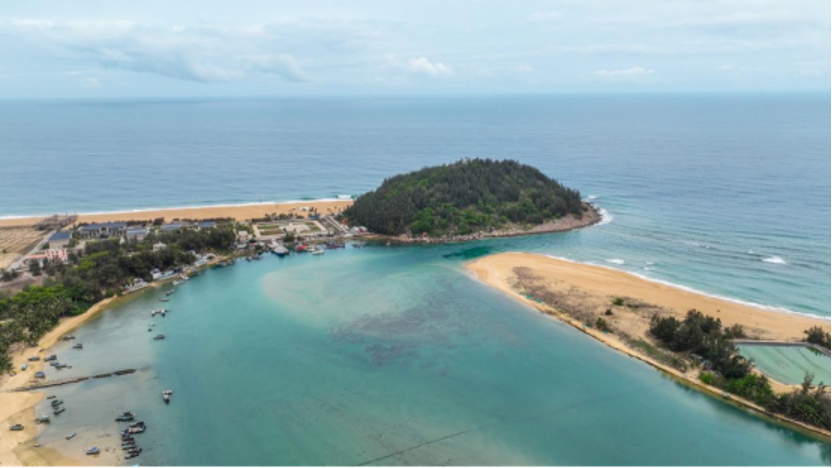
The southeast-facing lagoon at Hainan’s Li’an County is one of the research fields for blue carbon catchers.
Blue Carbon Catchers on a Mission
Coastal wetlands are among the most productive ecosystems on Earth – the plants there grow very fast. The blue carbon catchers try to better understand their potential as carbon sinks, environmental restoration and developing assessment methods for seagrass beds. To understand how this works, we recently followed them on a fieldwork trip.
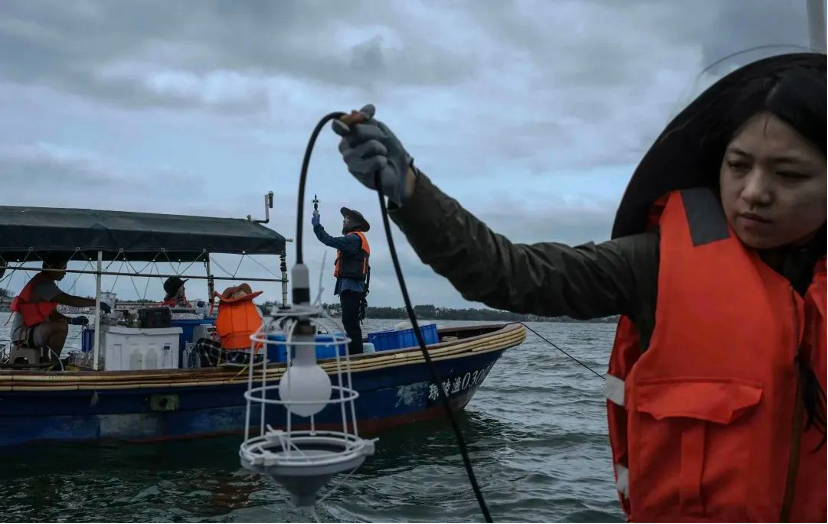
Dr. Xiaoxuan Gu and team are measuring optical properties in surface water.
One morning just before dawn, several groups of researchers from different specialties set out on boats to marked locations in the lagoon to collect samples and data from the surrounding seagrass beds. A remote sensing team observed large-scale satellite data; a water chemistry team sampled and analyzed water bodies; a water gas team studied the gas exchange between seawater and the atmosphere; and a planktonic group monitored phytoplankton in the water. Together, they worked to quantify the capacity to sequester and restore carbon by the target ecosystem of seagrass beds.
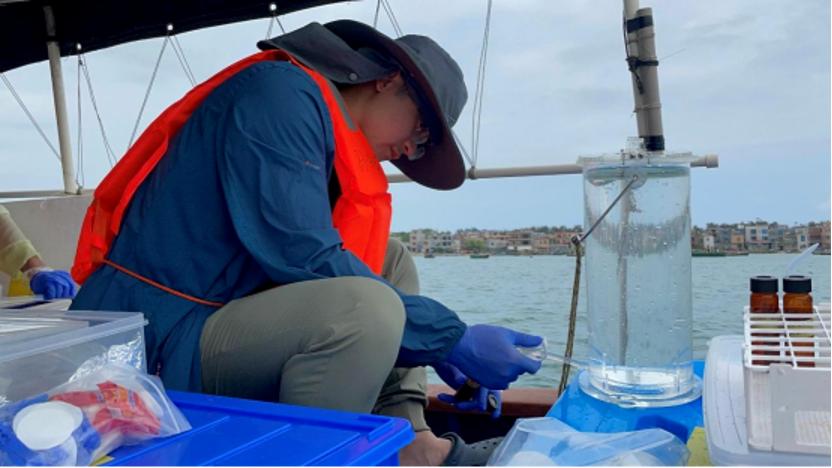
Professor Yuan Shen and his students are collecting and analyzing samples to identify the seagrass’ carbon footprint.
Meanwhile, another group waded out during low tide to study the diversity and density of benthic animals found on the exposed seabed. Assisting them were students who conducted seagrass ecosystem surveys. They recorded relevant information such as plant height, base diameter, and leaf numbers within a quadrat, and collected surface biomass to study the seagrass ecosystem in the area.
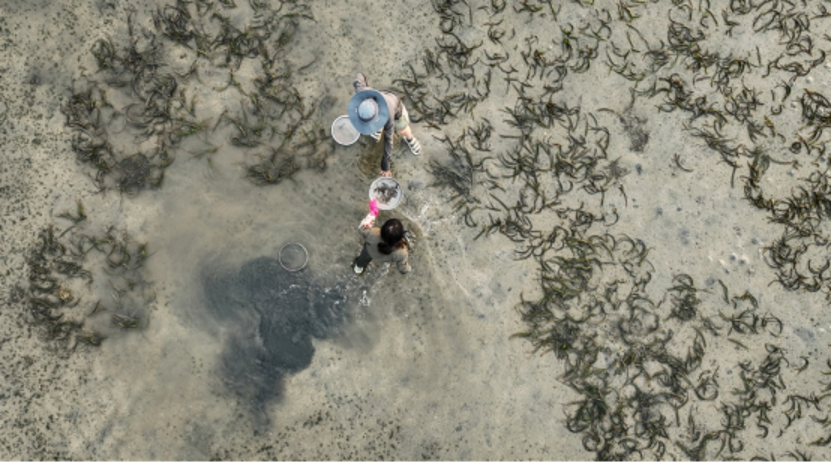
Researchers survey benthic animal diversity and seagrass plant communities in the sea calamus area.
Data collection can sometimes last for 72 hours straight in hot and humid weather, but their work is a crucial step in understanding the carbon capture and storage potential of these coastal ecosystems along with possible drawbacks that might arise.
From Fieldwork to Lab Analysis
Once the fieldwork is completed, the teams send their samples back to a temporary onshore laboratory, set up in the living room of a local fisherman’s house, for preliminary treatment. These samples, containing vital data on organic and inorganic carbon and nutrient salts, are then sent to Xiamen University for further analysis.
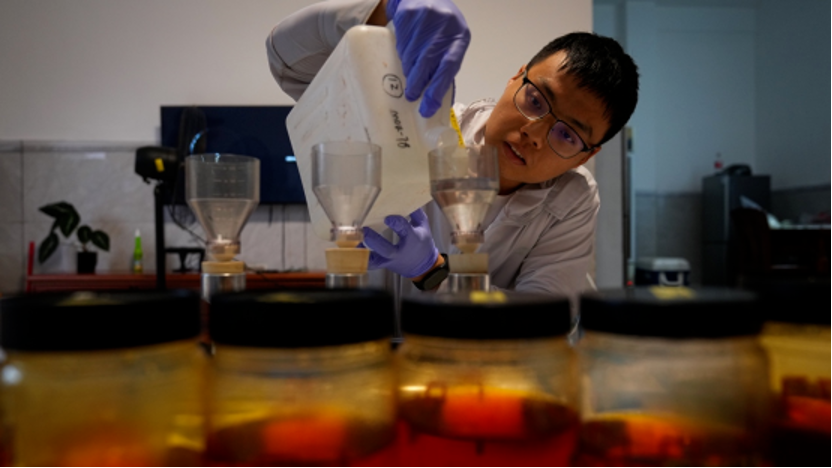
Hongwei Wang, a doctoral candidate, is processing the collected chlorophyll-a samples.
Studying samples can be time-consuming and labor-intensive. For example, a five-minute field sampling of chlorophyll-a requires five hours of processing before determining the chlorophyll-a content of the surface seawater, which is useful to gauge the health of the water.
BLUE-CARE: Developing an Evaluation Model for Ocean Carbon Sequestration
Recognizing the complexities of coastal carbon sinks, Tencent SSV Carbon Neutrality Lab partnered with the Laboratory of Offshore Marine Environmental Science at Xiamen University to undertake the Ocean Carbon Sequestration Technology Development (BLUE-CARE) project. Led by Professor Dai Minhan and coordinated by Professor Chen Luzhen, the project’s goal is to examine and quantify the capacity of the coastal marine ecosystem to capture and store carbon, bringing us a step closer to net-zero emissions.
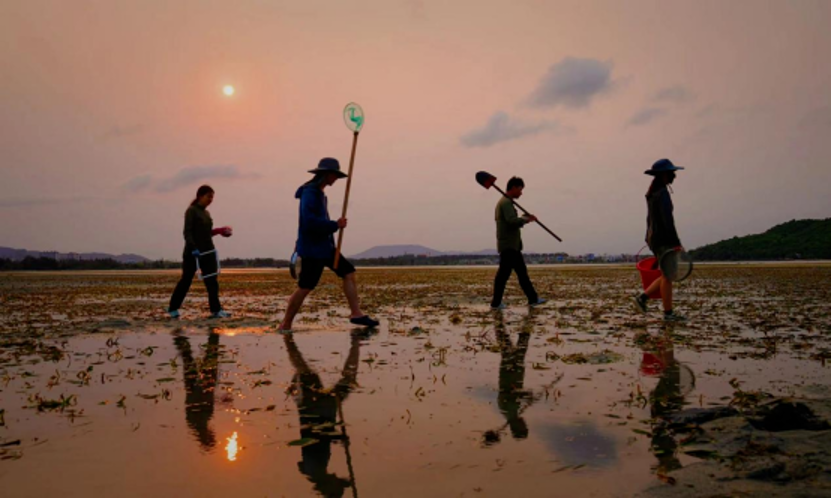
Researchers wrap up their day after collecting sufficient samples.
Establishing sound evaluation methods for marine carbon sinks is crucial to quantify the ocean’s role in carbon sequestration and storage. It also provides essential data for environmental policies and carbon trading systems. Accurate evaluation can also guide targeted strategies for restoration and governance of ocean ecosystems, optimizing the carbon capture potential of the world’s oceans in the fight against climate change.
The team’s work could lead not only to a demonstrated contribution to China’s pathway towards carbon neutrality, but also lay the foundations for the world’s first seagrass bed and salt marsh carbon sink trading project, providing a new nature-based solution.


